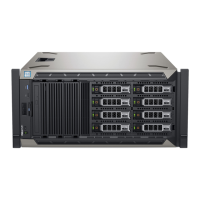Table 64. System Security details (continued)
Option Description
Below are the details of different boot modes available in the Se
cure Boot Mode
option.
User Mode In User Mode, PK must be installed, and BIOS performs
signature verification on programmatic attempts to update
policy objects. The BIOS allows unauthenticated programmatic
transitions between modes.
Audit mode In Audit Mode, PK is not present. BIOS does not authenticate
programmatic update to the policy objects and transitions
between modes. The BIOS performs a signature verification on
pre-boot images and logs the results in the image Execution
Information Table, but executes the images whether they pass
or fail verification. Audit Mode is useful for programmatic
determination of a working set of policy objects.
Deployed Mode Deployed Mode is the most secure mode. In Deployed Mode,
PK must be installed and the BIOS performs signature verification
on programmatic attempts to update policy objects. Deployed
Mode restricts the programmatic mode transitions.
Secure Boot Policy Summary Specifies the list of certificates and hashes that secure boot uses to authenticate
images. Below are the list of options available on the Secure Boot Policy Summary
screen:
1. Platform Key (PK)
2. Key Exchange Key (KEK) Database Entries
3. Authorized Signature Database (db) Entries
The options above are described through the following fields:
● Type
● Issuer
● Subject
● Signature Owner GUID
4. Forbidden Signature Database (dbx) Entries
Secure Boot Custom Policy
S
e
ttings
Configures the Secure Boot Custom Policy. To enable this option, set the Secure Boot
Policy to Custom option. Below are the list of options available on the Secure Boot
Custom Policy Settings screen:
1. Platform Key (PK)
2. Key Exchange Key (KEK) Database Entries
3. Authorized Signature Database (db) Entries
4. Forbidden Signature Database (dbx) Entries
5. Delete All Policy Entries (PK, KEK, db, and dbx)
6. Restore Default Policy Entries (PK, KEK, db, and dbx)
7. Export Firmware Hash Values
Creating a system and setup password
Pr
erequisites
Ensure that the password jumper is enabled. The password jumper enables or disables the system password and setup password
features. For more information, see the section.
NOTE: If the password jumper setting is disabled, the existing system password and setup password are deleted and you
n
eed not provide the system password to boot the system.
Steps
1. T
o enter System Setup, press F2 immediately after turning on or rebooting your system.
70 Pre-operating system management applications

